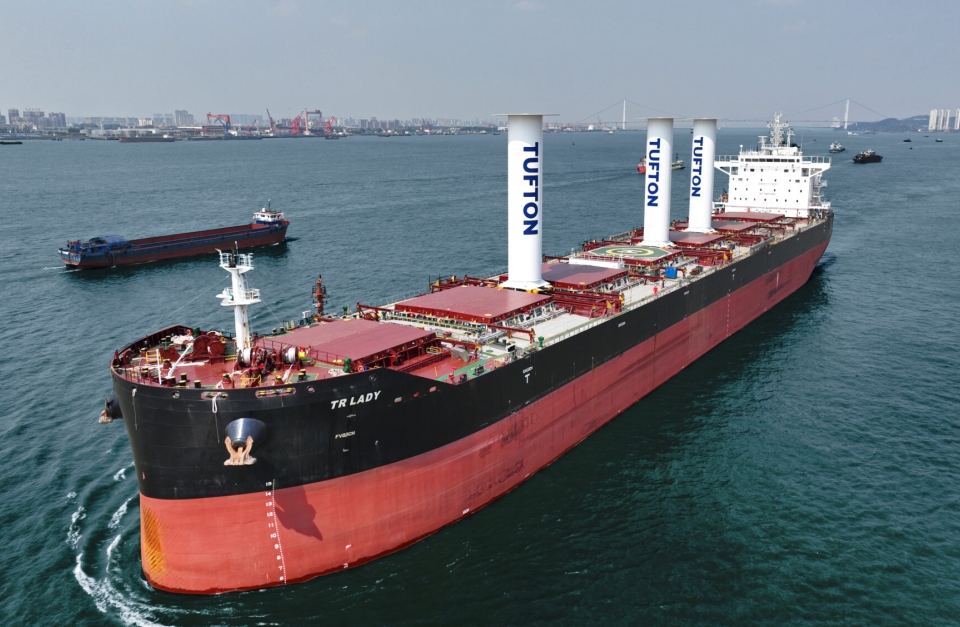The Magnus Effect is the key to the success of Rotor Sails. Anemoi, a company that provides wind technology for ships, explains exactly how the Magnus Effect works.
Named after Heinrich Gustav Magnus, the Magnus Effect is an aerodynamic phenomenon, which sees the generation of a perpendicular force on a spinning cylindrical object immersed within fluid or air.
Also read: Berge Bulk to fit two dry bulk carriers with Anemoi Rotor Sails
This phenomenon is the key to the success of Rotor Sails. When wind flow meets a spinning Rotor Sail, the wind in front is accelerated as it is pulled in the direction of the spin. This faster-moving wind has a lower pressure, like the wind over the top of an aircraft wing (but up to ten times more effective).
Meanwhile, the wind behind the Rotor Sail slows, causing an increase in pressure. The difference in pressure pushes the Rotor Sail forwards and propels the ship. Watch a video about the Magnus Effect by Anemoi below.
Picture: The TR Lady retrofit project won the “Retrofit Project of the Year” award at the Annual Marine Propulsion Decarbonisation Awards 2023 (photo by Anemoi).








